Most of my previous Mastering Lightroom series articles were about specific techniques and features of Adobe’s popular post-processing tool for photographers. Of course, learning these techniques is very important, yet for someone who’s just started using Lightroom, other questions come to mind first. Where do you start? What do you do first? How to keep your catalogs uncluttered and organized? Answers to these questions can be extensive, but in this article, I will try to describe a very simple, basic workflow I often use myself. This workflow allows me to keep my catalogs tidy yet at the same time helps me get to actual post-processing very quickly and in just a few steps. Many of you already have your favorite workflows, I’m sure, and some will involve different or more steps than this one. With this article, my goal is to get those of you completely new to Lightroom up and running quickly so that, with practice, you can decide on your own approach.

Table of Contents
1. Import
2. Pick or Reject
3. Assign to Collection
4. Process and Export
5. Final Words
1) Import

Lightroom is a catalog-based post-processing application. For someone new to such photo managing approach, it may sound complicated at first, but actually isn’t. What it means is that Lightroom doesn’t work with the original files, but stores information about them – along with rendered previews – in a set of files that make up a Catalog. We’re not going to talk about advantages and disadvantages of such a system, suffice to say both are present. More importantly with Lightroom, in order to edit images, you first need to import them into the Catalog. To import your images, start Lightroom and select “Import…” from the bottom of the left-side panel while in Library module (hit “E” to engage Library module or select from the Module panel at the top of the screen). Alternatively, you can import photographs by selecting “Import Photos and Video…” from File menu (Ctrl+Shift+I for Windows users).
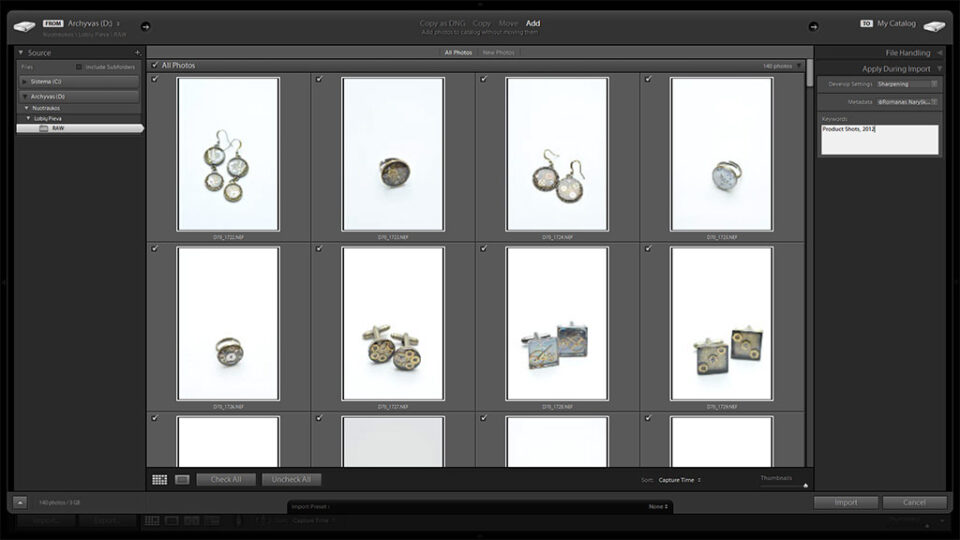
Once you’ve done that, the Import window will pop up. This is where you find the images you want to post-process and assign keywords to. We will be covering Importing more thoroughly in a separate article – information provided below is enough to get you started quickly.
1. Choose Source – find the location of the photographs you want to import and edit within Lightroom.
2. Copy as DNG, Copy, Move or Add – this setting can be found at the top of the Import window. Choose how you want the images to be added to your Catalog here. If you’re importing straight from a memory card, the option of simply adding photographs to Catalog will not be available as you must store them on your internal or external hard drive. If you’re not sure whether you should use DNG or proprietary RAW format, read our “DNG vs RAW format” article.
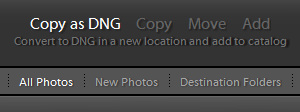
3. File Handling – not much to worry about here – I usually leave these check-boxes blank. Just make sure you select 1:1 previews. It will take longer for Lightroom to import photographs, but if you zoom in and out a lot to check image sharpness and noise, for example, 1:1 previews will greatly speed things up. If you suspect you may have duplicate photographs among those you want to import, you should check the “Don’t Import Suspected Duplicates” box. If you’re importing images from a memory card or flash-drive and want to back-up to another location, select the second check-box and specify destination.
4. File Renaming – this tab is only available if you’re moving/copying images from another location, otherwise it’s unavailable. If you want to rename original image files you’re about to import (and copy/move) from, say, a memory card, use the provided renaming templates or create your own.
5. Apply During Import – there are three settings available in this tab, all of which ought to be discussed in much more detail in a separate article dedicated to importing images. For our current purposes, keywords are most important here, so make sure to specify them. They will allow you to find related images much more efficiently through filters in Library module if you ever need to.
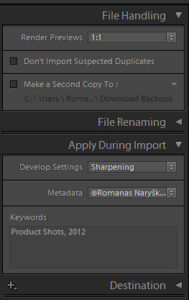
6.Destination – this tab is only available if you’re moving/copying images from another location. If you simply want to add photographs to Catalog, these settings won’t be visible. Other than that, everything’s quite straightforward – specify where you want the files moved/copied to before import.
2) Pick or Reject
Lightroom has the usual range of filters available, including color and rating. All these filters will be covered more extensively in a separate article. For now, we just need the flags. I find them very useful and quick to use. Basically, Lightroom has two flags you can put on each photograph. One of them is called Pick and is assigned by hitting the “P” key, the other one is called Reject and is assigned by hitting the “X” key. In total, this can give you three choices for an image. You can either “pick” it, “reject” it or leave it without a flag. To remove a flag from a photograph – regardless if it’s a Pick or Reject flag – just hit “U” on your keyboard.
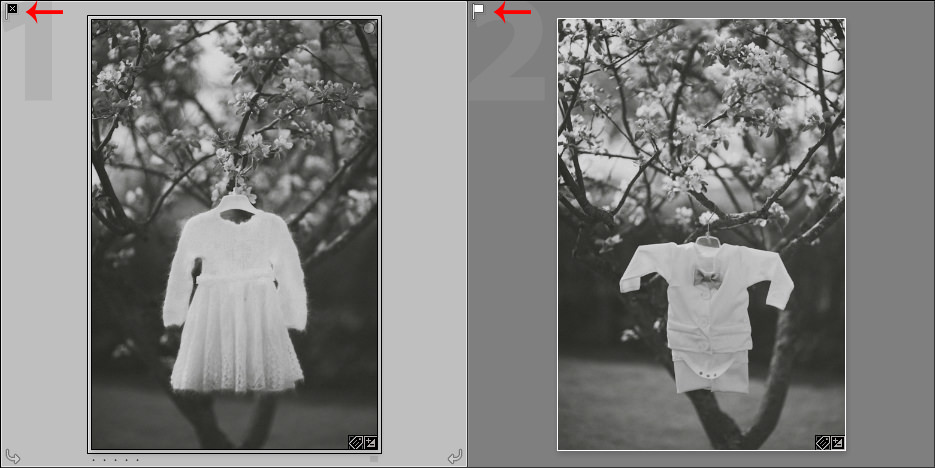
When going through imported images I am about to post-process, I mark them with corresponding flags right away. If I chose not to sort out photographs I don’t like prior to importing, I will assign Reject flag to them and, once I’ve looked through all the images, remove them by hitting Ctrl+Backspace (or choosing the “Remove Rejected Photos” from the “Photo” menu). I also find it very convenient separating images I want to be in B&W from those I want in color, and because usually I convert up to 30-50% of images to B&W for my wedding couples (less or equal to those in color), I assign the Pick flag to the ones I want in B&W as I sort through my images. In case it sounds a bit complicated, let me simplify – hit “X” on images you don’t like and want to remove, hit “P” for images you want in B&W, then delete (either from Catalog or hard drive) Rejected images by hitting Ctrl+Backspace and apply flag filters to edit color and B&W images separately. In the following screenshot, I have the Pick Flag filter enabled, which allows me to see just the Picked photographs to convert to B&W:
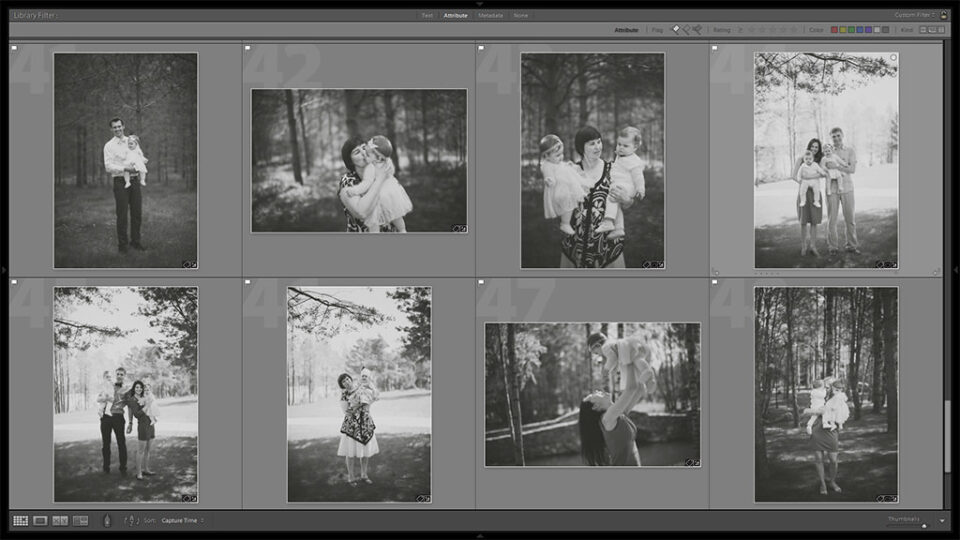
Alternatively, if there are images you are unsure of, you may mark the ones you like best with the Pick flag, mark those you want to remove with the Reject flag and assign images you want to convert to B&W to Quick Collection by hitting “B”, of which I will explain in the next section of this article. This way, you mark the images you like, those you dislike, and leave the ones you’re unsure of unmarked. You can then edit selected photographs by applying corresponding filter, as shown in the previous screenshot.
You may also choose to do the sorting in Library module as you get to work with large thumbnails, which quickens the whole process, but may not be such a good idea on low resolution monitors as it will be hard to see whether photograph in question is well focused or not.
3) Assign to Collection
Collections are the best way to organize your photographs within Lightroom for quick access. They are much like simple folders within your operating system – you create a Collection and then assign images to it by drag-and-drop. It doesn’t physically copy the photographs within Lightroom nor hard drive, but acts more like a shortcut would. Basically, you still have only one image in Lightroom even after copying it to a specific Collection (or several Collections) – it’s just that you can access it from different places. For example, if you have a Collection where you store all portraits, but also a Collection where you store all your B&W images, you could place a B&W portrait into both Collections. Also, if you select that image in your portraits Collection and then go to your B&W image Collection where it’s also stored, it’ll be already selected there as well.
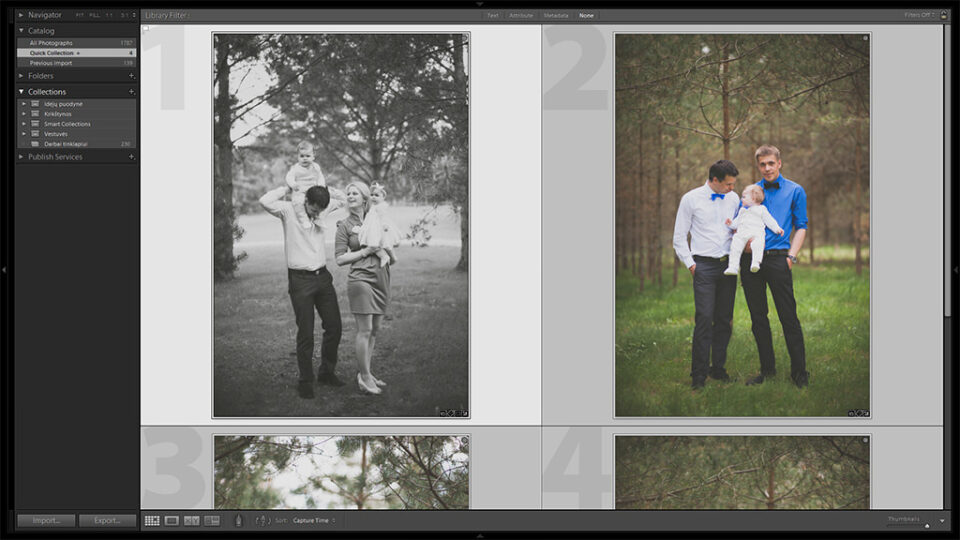
In any case, once you sort through your photographs and remove the ones you don’t like, it’s best to put them into a separate Collection. What this does is allows you to easily find the images among all the thousands you may have in your current Catalog, but also prevents you from permanently deleting images from it accidentally. Removing an image while being in a specific Collection will delete it from that Collection, but not from the Catalog.
To create a Collection, simply click “+” on the Collections tab which you can find on the right-side panel. A menu will pop-up – choose “Create Collection…” and name it. You can either select the images you want assigned to that Collection after you’ve created it and drag-and-drop, or you can select them prior to creating a Collection and tick “Include selected photos” check-box as you create a Collection.

In the previous section of this article, I mentioned assigning images to a Quick Collection by hitting “B”. You can remove images from quick collection by selecting them and hitting “B” again. Images assigned to Quick Collection will be marked with a grey dot and will appear in “Quick Collection+” section of the Catalog tab on the right-side panel. It’s rather convenient temporarily assigning images to Quick Collection as if it were a filter if, for example, you want to convert them to B&W all at once or perform some other action to a set of several different images quickly. That is, of course, not the only use Quick Collection has. Collections will be covered more thoroughly in upcoming Mastering Lightroom series articles.
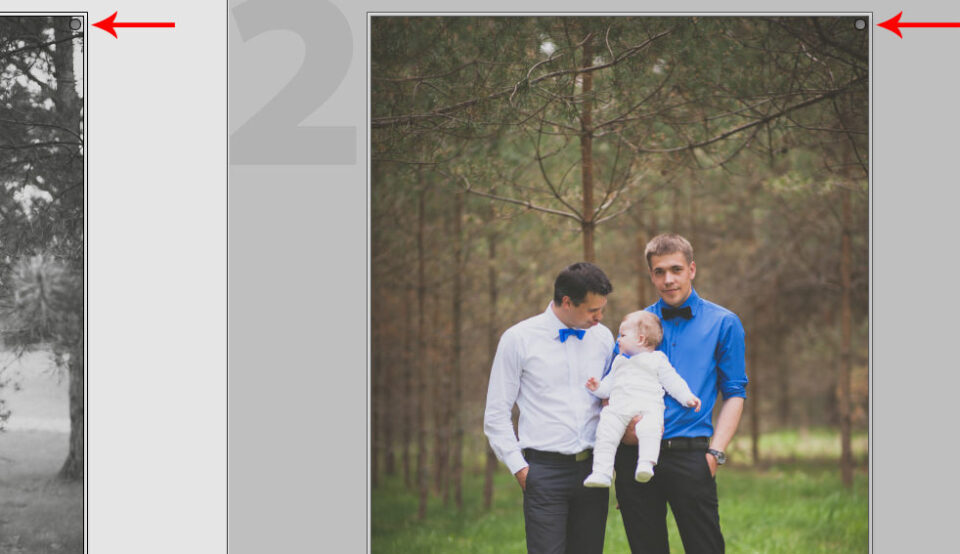
4) Process and Export
That’s it! All you’ve got to do now is post-process your photographs as you wish. With the help of either filters (flags, more specifically) or Quick Collection you now have color and B&W images separated so you can batch-process them quickly. Once you’re done with all the adjustments, turn off filters and select images to export.
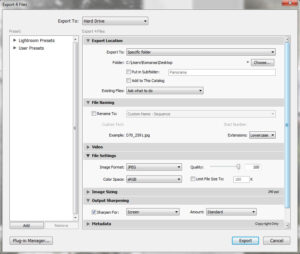
Exporting is easy – once you’ve selected photographs you want to export, right click on any one of them and choose “Export”->”Export…”. A new window will pop up and here are the most important settings you should revise (exporting will be covered in more detail in a separate article):
1. Export Location – specify where you want Lightroom to save your images.
2. File Naming – choose whether you want to rename the images on export or keep original file names. In case you do want to rename images, there’s a number of naming presets to choose from.
3. File Settings – specify file format (JPEG, TIF, DNG, etc.) of exported images as well as quality.
4. Image Sizing – if you want to export resized images, this is the best way to do it (for example, if you want to showcase your work on a personal blog, etc.). Specify dimensions.
5. Output Sharpening – apply additional sharpening to exported files. Especially useful if downsizing images on export or for print, where you’d want to slightly oversharpen the digital file.
6. Metadata – specify how much and what sort of metadata will be stored with the image once exported.
5) Final Words
It may seem to you at first that, for a very basic workflow, there’s quite a lot of points mentioned above. The truth is, however, you will only need to do a large portion of these actions just once or twice – most of the settings rarely need to be changed. In other words, what you’re left with is importing, assigning keywords, sorting through with the help of flags and separating B&W images from the color ones for quicker conversion. That’s it! Very simple. I use this workflow quite often – in fact, whenever I just want to process my images as quickly as possible and get back to shooting or writing. This workflow allows me to do just that without leaving my Catalog in a complete mess.
There are a lot of settings and options that, at first glance, require a lot more in-depth explaining, and that’s true up to a point. But to actually start working with Lightroom, you don’t need to know everything about it. You just need to know where to start – filling the blanks takes time and effort and can be done with practice. With this article, I did my best to show you one of the possible starting points. Hopefully, if you’re completely new to Lightroom, this article was of use to you.
